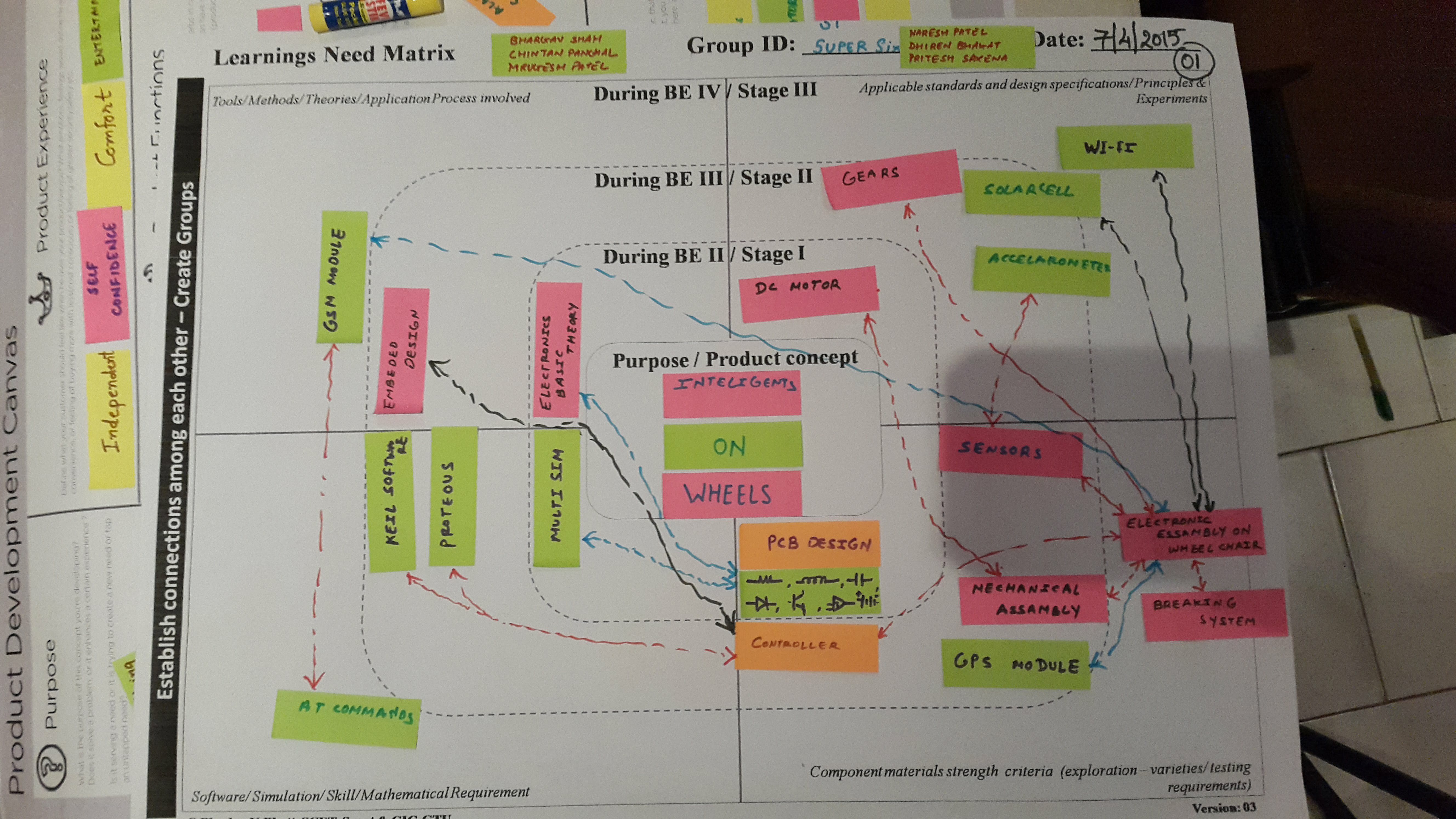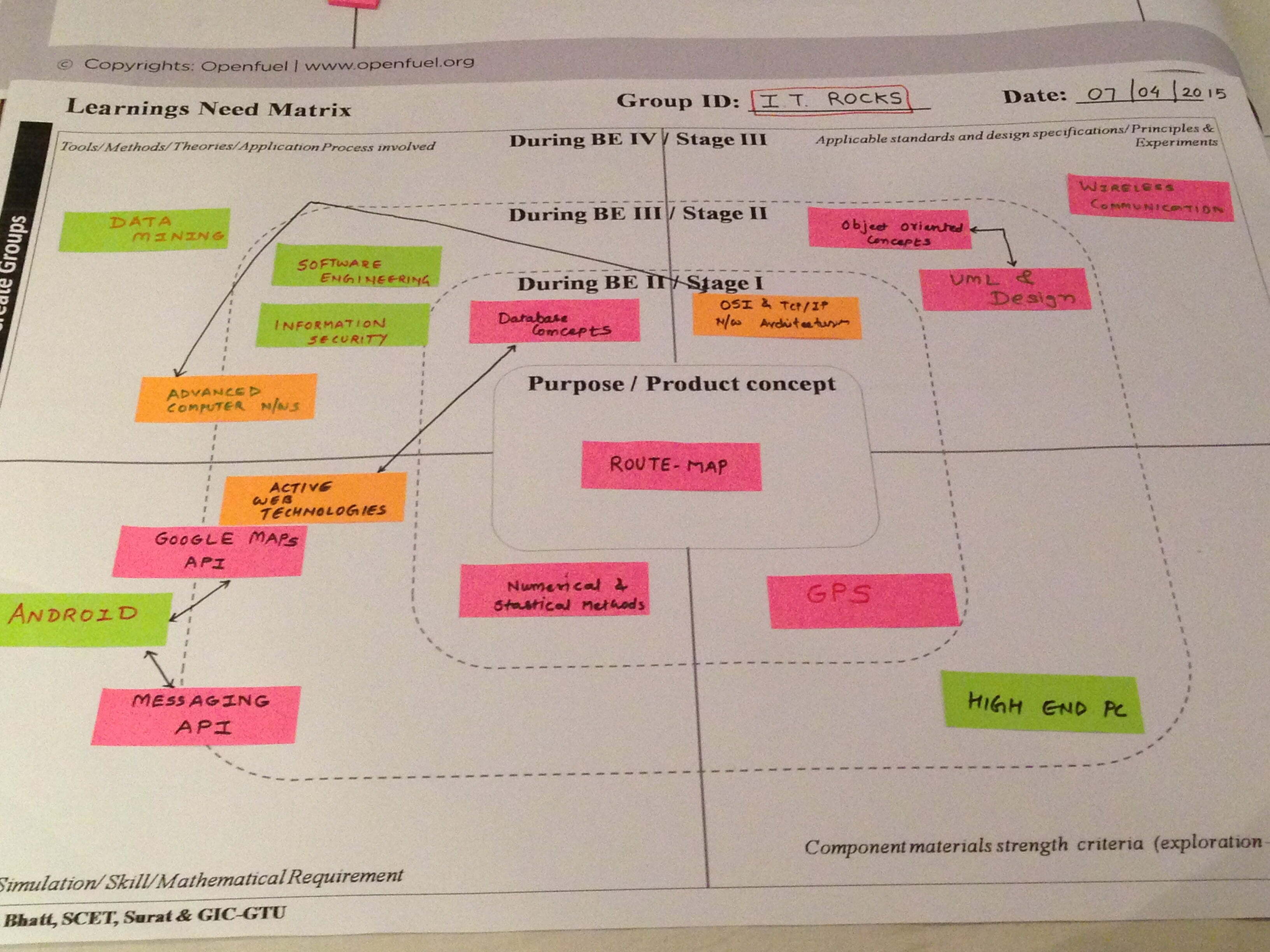Under the wisdom extended by the then Vice-Chancellor of GTU, Dr Akshai Aggarwal, in the year 2014-15, we developed a format named as Learnings Need Matrix for the use by the students across all engineering branches. This tool was developed for exploring its usage in the semester IV, when a refinement is carried out in the Product Development Canvas.
The purpose of LNM is to identify the requirements of learning among the team members. While a new product/process is under development based on a unique idea (to reduce the level of difficulty faced by a user), the team members need to learn and explore a lot of new skills and documents, methods and guidelines.
The LNM is containing a quadratic layout. From centre (the concept under development), it needs to have mention of learning/exploring requirements in each quadrant representing a specific type of skill acquisition. These quadrants have a timeline associated with it that can be considered in the year of studies (II, III and IV) or phases as (short-term, mid-term and long-term). Each identified requirement of learning is connected depending upon interdependencies and paths are to be drawn. The team members can develop their own learning path to contribute to the efforts of the team for developing the concept underlying at the centre of the LNM.
Paper to be used here should be of A2 size, plain and white paper. If not printed with the format suggested below, partitions can be drawn manually as well.
Each learning need identified is required to be mentioned in form of a word. Using a sticky note, it should be pasted in a particular quadrant considering timeline decided to accomplish the learning/exploring. Below is the LNM format.

Top-right quadrant identified the learning requirement regarding applicable standards, design specification, exploration and understanding of scientific principles and identification of different types of experiment to be performed over a period of time.
Top-left quadrant suggests making identification of learning the use of various tools, processes, methods of application, theories to apply tools involved.
The lower-left quadrant contains identified needs for learning of software, simulation techniques, skills, mathematical learning requirements and so on.
Lastly, the lower-right quadrant shall have the needs identified pertaining to an understanding of various alternative materials, its strength and other properties, standards, as well as its testing requirements, depending upon envisaged quality.
A video lecture (26 min) is describing more about the creation of an LNM and chasing the learning requirements.
The LNM tool is primarily addressing to be learnt by the students of engineering, however, broadly, it can be employed for use for any product/process under development.
Click on an image to check out a few examples of the LNM.
The LNM has an application of underlying principles pertaining to systems design as well as project management.
 Click above DOWNLOAD icon to refer to a presentation containing some tips about LNM and chasing the learning ahead.
Click above DOWNLOAD icon to refer to a presentation containing some tips about LNM and chasing the learning ahead.
Page created/updated on 04/March/2018

Learnings Need Matrix (LNM) by Bhasker Vijaykumar Bhatt is licensed under a Creative Commons Attribution-ShareAlike 4.0 International License.
Based on a work at https://youtu.be/713UPHl_BNE.





Thanks for sharing Learning Needs Matrix … it would be great tool for self punching & zero looping charging theory… like direct injection system engine of Four wheel Car…. Keep Sharing… World learner need lot in forthcoming situations.
Pingback: Reverse Engineering | bvbhatt
Tnx a lot ..?